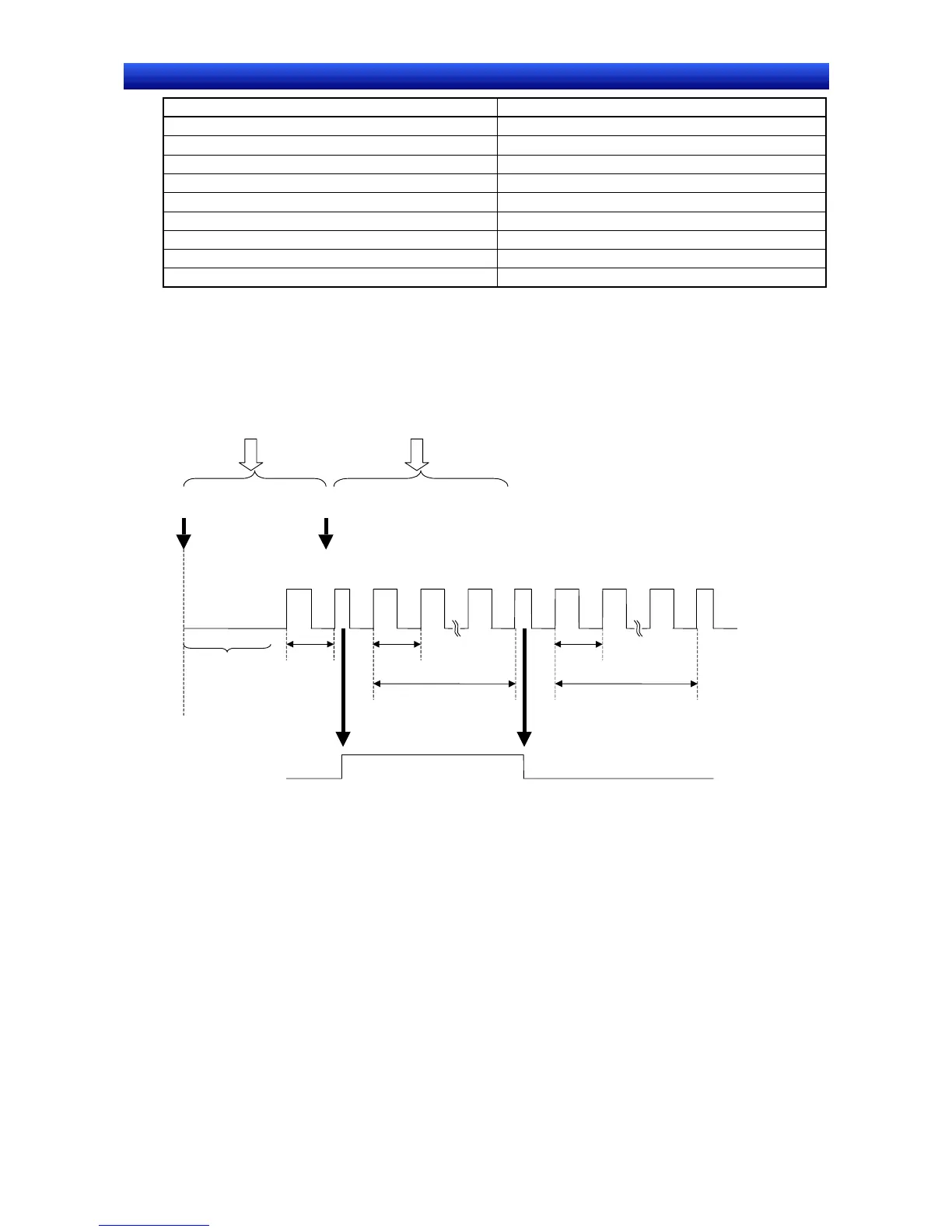Section 2 NS Series Functions 2-4 System Memory
2-22
NS Series Programming Manual
Timing Screen switch strobe notification
From base screen to base screen Yes
From non-base screen to base screen (See note.) No
Open, close, move pop-up screen No
Move to System Menu No
Move to transfer No
Startup initial screen display No
Move to screen saver No
Frame switch No
Screen switch failure (switched to non-existent screen) No
Note: Applicable to System Menu, transfer, and screen saver.
$SB2 will not turn OFF if no communications between $SB2 and the allocated address is set in the
CX-Designer system settings.
The screen switch strobe will operate as shown in the following diagram if a screen switch is performed
after another screen switch.
Switching to Another Base Screen during “A”
The PT moves to the next screen switch processing without making screen switch strobe notification
for the first screen.
Switching to Another Base Screen during “B”
The PT moves to the next screen switch processing without turning OFF screen switch strobe notifica-
tion for the first screen.
Prohibit Shifting to System Menu ($SB3)
$SB3 prohibits transfer to System Menu. If $SB3 is turned ON, transfer to System Menu is prohibited
by pressing the two points on the screen. Transfer from an error dialog box to the System Menu when
an error is generated is not prohibited.
Battery Low ($SB4)
$SB4 is for notification of a drop in the PT battery voltage. $SB4 turns ON when the voltage drops and
turns OFF when the battery is replaced and the voltage returns to normal.
$SB/$SW
refresh
Communications
cycle
(One read of all
information)
A B
n
Communications
cycle
$SB/$SW
refresh
$SB/$SW refresh cycle (n times)
Initial display or end screen switching
A B
n
Communications
cycle
$SB/$SW
refresh
$SB/$SW refresh cycle (n times)
Initial display or start screen
switching
Preparation for new
screen display, including
•
Monitor registration
clear
•
Screen data read
•
Monitor registration
A B
Screen switch strobe

